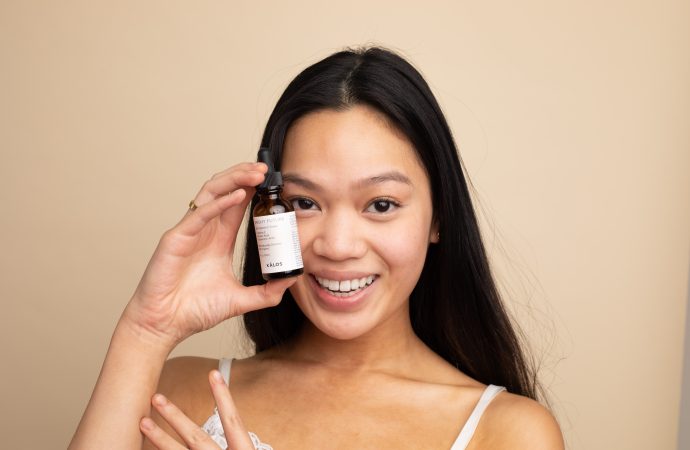Introduction Are you tired of hiding behind foundation and concealer to cover up unsightly pigmentation on your skin? Do you dream of having a clear, even complexion that radiates health and confidence? If so, then this blog post is for you! In this article, we will share some insider tips and tricks on how to
Introduction
Are you tired of hiding behind foundation and concealer to cover up unsightly pigmentation on your skin? Do you dream of having a clear, even complexion that radiates health and confidence? If so, then this blog post is for you! In this article, we will share some insider tips and tricks on how to get rid of pigmentation once and for all. Say goodbye to dark spots, melasma, and other types of hyperpigmentation with these simple yet effective strategies. So sit back, relax, and let’s dive in!
What is Pigmentation?
Pigmentation is the darkening of the skin due to an increase in melanin production. Melanin is a pigment that gives skin its color. The more melanin you have, the darker your skin will be. Pigmentation can occur naturally as a result of aging or sun exposure, or it can be caused by certain medications or medical conditions.
Pigmentation can be a cosmetic concern for many people. It can be difficult to get rid of, but there are treatments available that can help lighten the skin and improve the appearance of pigmentation.
There are two main types of pigmentation: brown spots and melasma. Brown spots, also called age spots or sun spots, are small, dark patches that develop on the skin. They are usually harmless and do not require treatment. Melasma is a larger area of pigmentation that often occurs on the face. It is more common in women and typically develops during pregnancy or when taking certain hormonal medications. Melasma can be difficult to treat and may require multiple sessions of laser therapy or other treatments to improve the appearance of the skin.
Causes of Pigmentation
Pigmentation is caused by an excess of melanin in the skin. Melanin is a natural pigment that gives skin its color. When there is too much melanin, it can cause the skin to appear darker than usual. There are several factors that can contribute to pigmentation:
Sun exposure: UV rays from the sun stimulate the production of melanin, which can lead to pigmentation.
Hormonal changes: Hormonal fluctuations, such as during pregnancy or menopause, can cause an increase in melanin production, resulting in pigmentation.
Certain medications: Some medications, such as birth control pills or antibiotics, can trigger an increase in melanin production and lead to pigmentation.
Skin injuries: Pigmentation can sometimes occur after a skin injury, such as a burn or cut. This is because the body produces more melanin to protect the damaged area from further damage.
Types of Pigmentation
Pigmentation is the darkening of the skin due to an excess of melanin. Melanin is a pigment that is produced by the body to protect the skin from the sun’s harmful UV rays. However, when there is an overproduction of melanin, it can cause the skin to become darker than its natural color. Pigmentation can be caused by a number of different factors, including sun exposure, hormones, and certain medications. There are two main types of pigmentation:
1. Hyperpigmentation: This is when the skin becomes darker than its natural color. It can be caused by a number of different factors, including sun exposure, hormones, and certain medications. Hyperpigmentation can be treated with topical lightening agents or lasers.
2. Hypopigmentation: This is when the skin becomes lighter than its natural color. It can be caused by injury to the skin, such as burns or surgery. Hypopigmentation can also be caused by certain diseases or conditions, such as vitiligo or albinism. Treatment for hypopigmentation typically involves topical lightening agents or camouflage makeup.
Treatments for Pigmentation
There are a number of treatments for pigmentation, including topical creams and serums, laser therapy, and chemical peels.
Topical creams and serums can help to lighten the skin and reduce the appearance of pigmentation. Laser therapy can be used to target specific areas of pigmentation and destroy the melanin that causes it. Chemical peels can also help to reduce the appearance of pigmentation by removing the top layer of skin where the pigmentation is most visible.
Home Remedies for Pigmentation
There are a number of home remedies that can help reduce the appearance of pigmentation. These include:
-Vitamin C: Vitamin C is a powerful antioxidant that can help to brighten the skin and even out skin tone. It can be found in many citrus fruits, as well as in supplements.
-Lemon juice: Lemon juice is a natural bleaching agent that can lighten dark spots on the skin. Simply apply lemon juice to the affected area and allow it to sit for 10 minutes before washing it off.
-Aloe vera: Aloe vera has soothing and anti-inflammatory properties that can help to reduce the appearance of pigmentation. Apply aloe vera gel to the affected area and allow it to dry before rinsing it off.
-Potatoes: Potatoes contain an enzyme called catecholase, which has been shown to lighten pigmented areas of the skin. Simply grate a raw potato and apply it to the affected area for 10 minutes before washing it off.
Prevention of Pigmentation
There are many ways to prevent pigmentation, but the most important is to avoid sun exposure. Use sunscreen every day, even when it’s cloudy, and reapply it often. Wear protective clothing, such as a wide-brimmed hat, long sleeves, and pants when you’re outside.
Other measures you can take to prevent pigmentation include:
•Avoiding tanning beds
•Wearing sunglasses and a hat when outdoors
•Limiting your time in the sun, especially during peak hours (10am to 4pm)
•Using a broad-spectrum sunscreen with an SPF of 30 or higher
Conclusion
Pigmentation can be a difficult skin condition to deal with, but there are ways to manage and even get rid of it. Different treatments work better for different people, so it’s important to find the right approach that works best for you. With the help of your dermatologist or other medical professional, you can decide on the best plan of action based on your personal needs and goals. If followed correctly, these steps will help you achieve smoother and more even toned skin in no time.





















Leave a Comment
Your email address will not be published. Required fields are marked with *